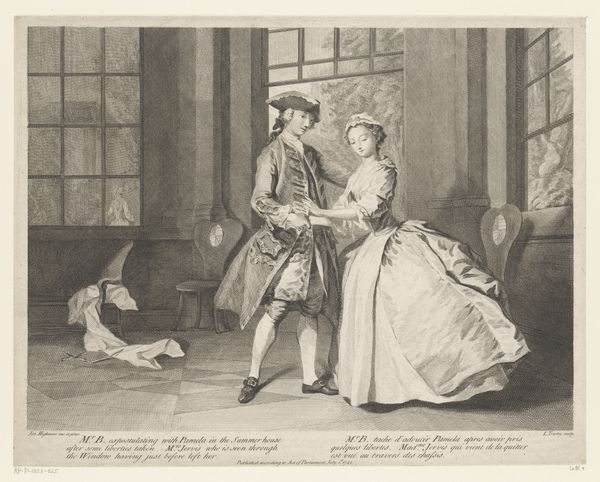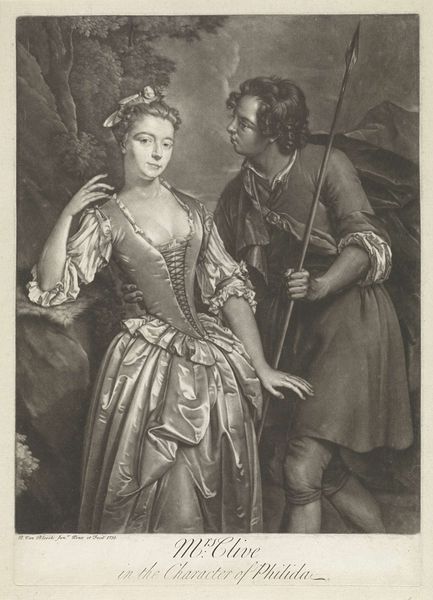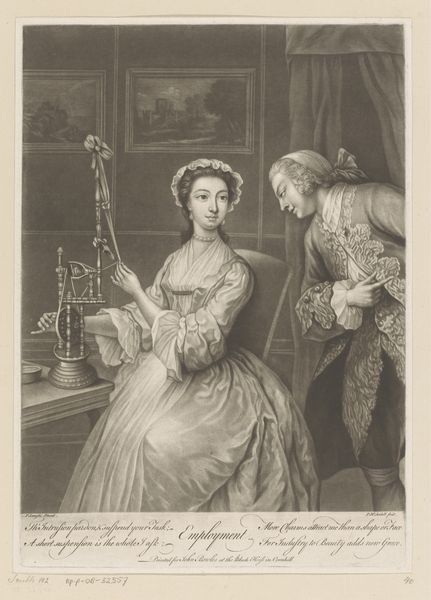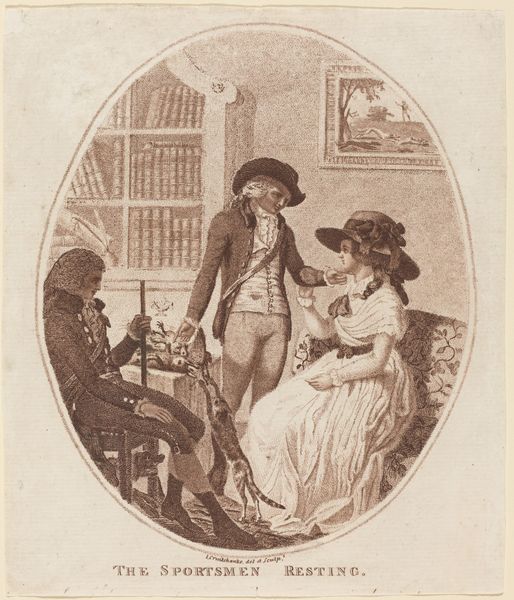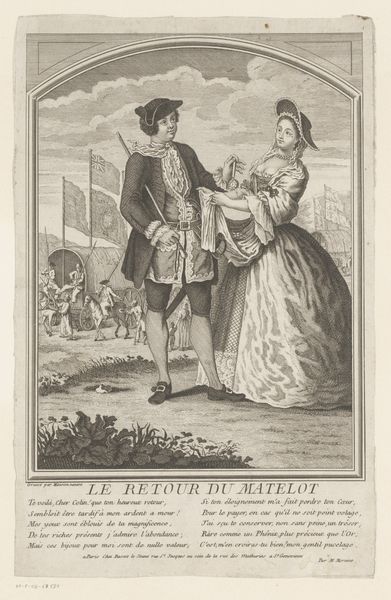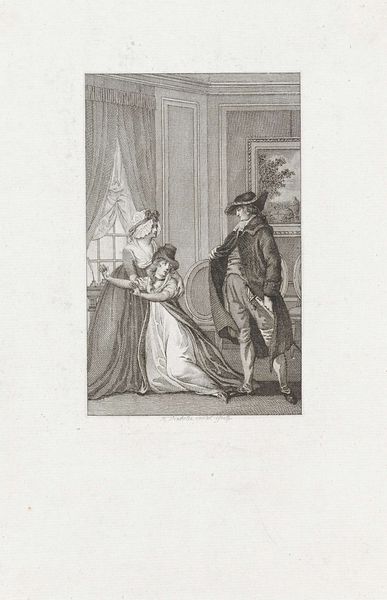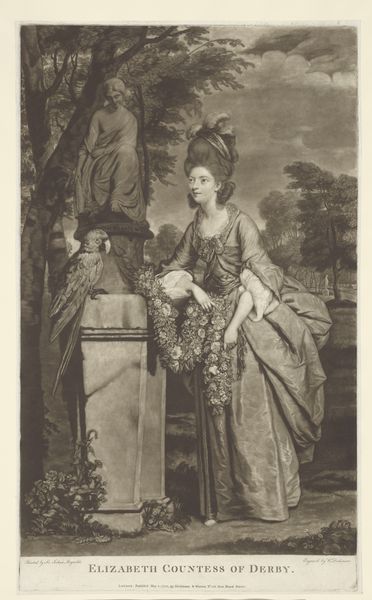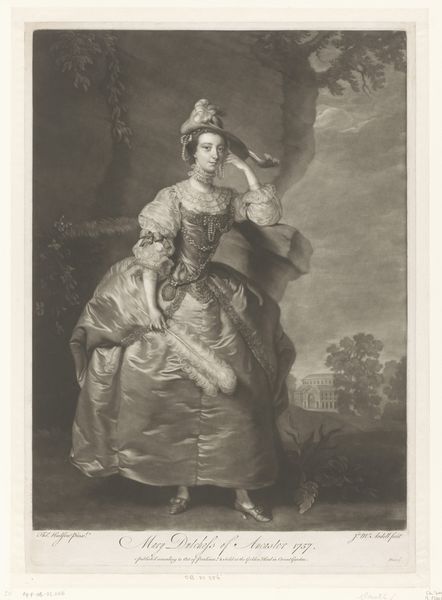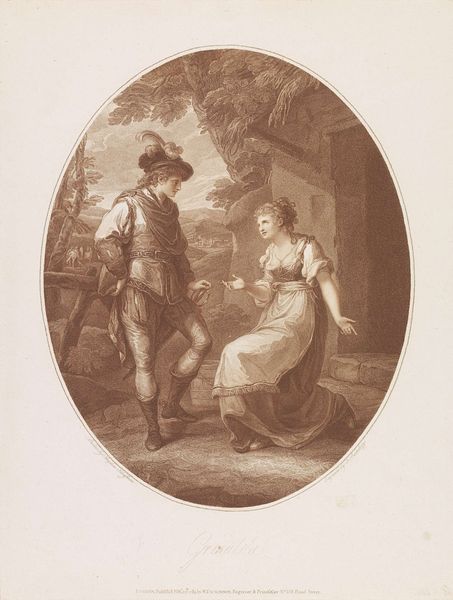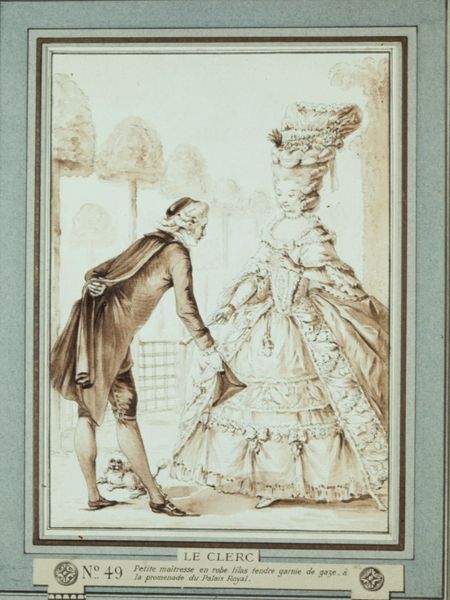
Portret van Thomas Lowe en mevrouw Chambers als kapitein Macheath en Polly 1752
0:00
0:00
print, engraving
#
portrait
#
baroque
# print
#
charcoal drawing
#
genre-painting
#
engraving
Dimensions: height 428 mm, width 300 mm
Copyright: Rijks Museum: Open Domain
Editor: Here we have James McArdell's 1752 print, "Portret van Thomas Lowe en mevrouw Chambers als kapitein Macheath en Polly," currently housed at the Rijksmuseum. It's quite a formal portrait, despite depicting these figures seemingly in costume. What do you see when you look at this work? Curator: I observe a fascinating interplay of lines and forms. The artist has meticulously rendered the textures of the fabrics, note the crisp folds of the woman's skirt against the smoother finish of the man's coat. There is an interesting tension created by the near symmetry in their placement and pose, balanced with asymmetry in their dress and direction of gaze. Notice how the doorway behind the female figure is offset. Editor: The contrast between the woman's ornate dress and the plain doorway is something I hadn’t fully registered. What is its effect? Curator: Semiotically, we might read it as a comment on artifice versus reality. The couple's elaborate attire signals a performance, or a constructed identity, while the background suggests a more fundamental truth. The engraving itself uses light and shadow strategically. Could you describe the tonal relationships present within the piece? Editor: Well, there's definitely a strong contrast; the subjects are well-lit and pop against a dark backdrop. But look closer, there are gradations and subtleties there. That soft glow almost adds a sense of dynamism. Curator: Precisely. The dynamism derives from strategic and contrasting applications of the technique of mezzotint engraving to capture light. And, again, observe how that is played off against very regimented line work for detail. Editor: It’s amazing to consider how McArdell captured so much texture using solely line and tone. I learned a lot today, thank you. Curator: Indeed. Examining the structure of the forms and the contrast is key. These principles grant one a new means of appreciation for not only the work but the processes by which that work was made.
Comments
No comments
Be the first to comment and join the conversation on the ultimate creative platform.
